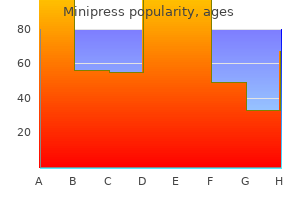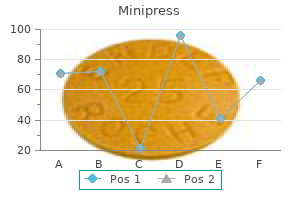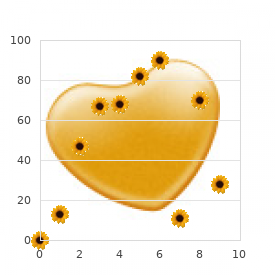Sandeep S. Dave, MD
- Professor of Medicine
- Member of the Duke Cancer Institute

https://medicine.duke.edu/faculty/sandeep-s-dave-md
Minipress dosages: 2 mg, 1 mg
Minipress packs: 30 pills, 60 pills, 90 pills, 120 pills, 240 pills, 300 pills, 180 pills, 270 pills, 360 pills

Discount minipress 2 mg buy online
Immediately after transplantation, diarrhea is attributable to the toxic results of cytoreductive therapy on the intestinal epithelium. In gentle cases, the mucosa appears normal on inspection at endoscopy, but apoptosis of gastric gland or crypt cells could be discovered on biopsy. In extreme circumstances, denudation of the intestinal epithelium results in diarrhea and malabsorption and often requires parenteral dietary support. Malabsorption attributable to small bowel resection or surgical bypass is known as the short-bowel syndrome. The most typical causes in the United States are huge resection of the jejunum, owing to strangulated bowel, volvulus, or ischemia (mesenteric or after intra-abdominal surgery), and jejunal exclusion, owing to gastric bypass surgery. The severity of malabsorption depends on the positioning and extent of resection; the capacity for adaptive hyperplasia, dilation, and elongation; and the function of the residual bowel. Mechanisms of malabsorption after small bowel resection embrace a decreased absorptive floor space, decreased luminal bile salt focus, fast transit, and bacterial overgrowth. Limited jejunal resection often is tolerated best as a result of bile salt and vitamin B12 absorption stay regular. Ileal resection is less nicely tolerated due to the consequences of bile salt wasting and the limited capability of the jejunum to bear adaptive hyperplasia. Using intestinal stem cell technology, epithelial organoids have been efficiently grown in culture techniques, but bowel regeneration has not yet been accomplished. When lower than a hundred cm of jejunum remains, the colon takes on an essential role in caloric salvage and fluid reabsorption. Malabsorbed carbohydrates are digested by colonic bacteria to short-chain fatty acids, which are absorbed within the colon. These people waste sodium, chloride, bicarbonate, magnesium, zinc, and water in their ostomy effluent. Dietary modifications should embrace a high-salt, nutrient-rich diet given in small meals.
Buy minipress 1 mg with mastercard
Soluble transferrin receptor (sTfr), increased in iron deficiency or when erythropoiesis is expanded, may assist to differentiate the anemia of irritation and iron deficiency. In common, an elevated sTfr is present in iron deficiency, with or without coexisting inflammation. The sTfr/log ferritin index is taken into account the most effective indicator for discriminating anemia of irritation (ratio of about 1) from iron deficiency in anemia of irritation (ratio of more than 2) (Table 150-4). In apply, the analysis of iron deficiency in inflammatory situations depends on an arbitrary cutoff of ferritin (<100 g/L) or percent saturation of transferrin (<20%) in case the ferritin is higher than 100 g/L (usually between one hundred and 300). The anemia of inflammation is the second most frequent anemia worldwide and the first amongst hospitalized patients. Acute types of anemia of irritation happen in intensive care items, secondary to sepsis, intensive burns, or polytrauma. The anemia of inflammation is associated with elevated manufacturing of proinflammatory cytokines, upregulation of hepcidin, and deregulation of iron homeostasis. Pathogenic mechanisms are a quantity of, together with relative erythropoietin deficiency, blunted erythropoietic response, macrophage iron sequestration, iron-restricted erythropoiesis, and shortened erythrocyte survival. Anemia in each hematologic malignancies (lymphoma and myeloma) and solid tumors (ovarian and colon cancer) is much more complicated; irritation in most cancers is usually present along with blood loss or chemotherapy-induced bone marrow toxicity, malnutrition, or concomitant infections. The anemia of inflammation might coexist with absolute iron deficiency as a result of blood loss, as could regularly occur in inflammatory bowel ailments and colon cancer. In inflammatory bowel disease, intravenous iron ought to be most well-liked in case of illness flares as a result of oral iron is less tolerated and may even cause further mucosal injury. They are used in selected patients with myelodysplastic syndromes and in most cancers sufferers undergoing chemotherapy. In this functional iron deficiency, intravenous iron is more effective than oral iron. Blood transfusions are indicated only to alleviate anemia-related symptoms but ought to be averted as chronic treatment because of transfusion-associated risks.

Buy minipress 2.5bottles cheap
Patients sometimes have extreme odynophagia with evidence of radiographic or endoscopic esophageal ulcers. Treatment is often with intravenous ganciclovir (5 mg/kg once or twice day by day for 10 to 14 days) or foscarnet (90 mg/kg every 8 to 12 hours till healing occurs). Bacterial Esophagitis Bacterial an infection of the esophagus is uncommon however can occur in immunosuppressed patients, sometimes these with neutropenia and malignancy. Patients current with chest pain or odynophagia, or both, and endoscopy reveals intensive erosions, usually within the distal esophagus. Biopsy and Gram stain reveal acute and persistent inflammation and micro organism, commonly gram-positive organisms, especially viridans-group streptococci, Staphylococcus aureus, Staphylococcus epidermidis, and Bacillus species. Endoscopy and radiology characteristically show multiple ulcers and friable mucosa, predominantly involving the distal esophagus. Depending on the severity of the esophageal illness and the underlying well being of the patient, remedy choices could embody intravenous acyclovir, 5 mg/kg each eight hours for 7 days, or oral acyclovir, 400 mg 5 instances daily for 7 days, combined with symptomatic therapy. The prognosis is made by histologic demonstration of koilocytosis (an atypical nucleus surrounded by a ring), giant cells, or immunohistochemical stains. Treatment is usually not needed, though massive lesions could require endoscopic removal. Other treatments, similar to interferon, bleomycin, and etoposide, have yielded varying results. Esophageal candidiasis characteristically presents with symptoms of odynophagia, dysphagia, and chest ache. A sudden rise in intraesophageal pressure throughout forceful vomiting is the cause generally. The tear is mostly in the lower third of the esophagus, 2 to 3 cm proximal to the gastroesophageal junction.

Buy 1mg minipress with amex
Furthermore, cross-sectional imaging or cholangiography would be expected to reveal a distal biliary stricture throughout the head of the pancreas or perhaps with a dilated bile duct proximally, not the imaging findings described in this case. The regulation of the numbers of every cell sort is carefully managed by paracrine and endocrine hematopoietic growth components, which exert antiapoptotic, proliferative, and differentiative results on hematopoietic stem, progenitor, and maturing blood cells. The determination to self-renew or differentiate is a stochastic course of, at the stem cell stage and on the subsequent multipotent or unipotent levels of differentiation, that may be influenced by numerous cell extrinsic (growth elements and stromal proteins) and cell intrinsic (transcription factors) molecules. Hematopoietic stems cells reside in specialised microenvironments (niches) throughout the bone marrow. Several molecular switches have been identified that decide hematopoietic cell fate. Equally important to hematopoiesis is a gaggle of hematopoietic development components that share structural homology and bind to nonredundant sort I transmembrane proteins belonging to the cytokine receptor household. Many of these proteins are the physiologic regulators of a particular lineage of blood cells. Erythropoietin is produced predominantly by the kidneys and to a lesser extent within the liver and acts on marrow erythroid progenitors to improve their survival, proliferation, and differentiation. Levels of erythropoietin are inversely related to hemoglobin concentrations within the blood, as reflected in renal oxygen rigidity. Genetic elimination of erythropoietin or its receptor leads to embryonic lethality, establishing that though different cytokines can influence erythropoiesis, purple blood cell manufacturing is totally dependent on the hormone. Similar to the motion of erythropoietin on erythroid progenitors, granulocyte colony-stimulating factor acts to enhance the survival, proliferation, and differentiation of neutrophil progenitors. In addition, the cytokine acts to functionally activate the mature cells it helps to produce. Genetic elimination of granulocyte colony-stimulating factor or its receptor in mice reduces neutrophil levels to 25% of normal, the one hormone identified to exert this great an influence on granulopoiesis. Thrombopoietin, the first regulator of platelet manufacturing, is produced in the liver and by marrow stromal cells. But unlike the other two cytokines, thrombopoietin additionally has necessary, nonredundant results on the hematopoietic stem cell. Another class of cytokines and receptors that influences hematopoiesis is exemplified by the c-kit receptor, a member of the receptor tyrosine kinase family of floor proteins, and its cognate ligand, stem cell issue (also termed steel factor or kit-ligand). Although the c-kit receptor is structurally distinct from members of the hematopoietic cytokine receptor household (discussed above), stem cell issue is structurally related to the cytokines that bind to members of the hematopoietic growth issue family.

Diseases
- Epiphysealis hemimelica dysplasia
- Marie type ataxia
- Proctitis
- Retinoschisis
- Hallucinogen persisting perception disorder
- Ramos-Arroyo syndrome
- Flotch syndrome
- Indomethacin antenatal infection

Buy 2.5mg minipress overnight delivery
The differential prognosis includes mechanical obstruction, practical gastrointestinal disorders, anorexia nervosa, and the rumination syndrome. A motility disorder of the abdomen or small bowel should be suspected whenever massive volumes are aspirated from the stomach, notably after an in a single day fast, or when undigested strong food or giant volumes of liquids are noticed during esophagogastroduodenoscopy. However, the prognosis requires documentation of delayed gastric emptying of a digestible solid meal. In symptomatic sufferers with pseudo-obstruction, plain radiographs of the abdomen usually show dilated loops of small bowel with associated air-fluid ranges. Mechanical obstruction must be excluded by upper gastrointestinal endoscopy and small bowel imaging studies, together with a small bowel follow-through, computed tomographic enterography, and magnetic resonance enteroclysis. Capsule endoscopy must be averted due to the potential danger of retention of the capsule. These studies not often determine the trigger, however, apart from systemic sclerosis and mitochondrial cytopathy, which are characterised by megaduodenum, multiple small bowel diverticula, and pneumatosis intestinalis. After mechanical obstruction and different diagnoses such as Crohn disease (Chapter 132) have been excluded, a transit profile of the abdomen or small bowel ought to be carried out. The most popular take a look at is a gastric emptying research, in which ingestion of a radiolabeled solid meal is followed by scintigraphy at 0, 1, 2, 3, four, and 6 hours. If the trigger is unclear, gastroduodenal manometry by use of a multilumen tube with sensors in the distal abdomen and proximal small gut can differentiate a neuropathic course of (normal-amplitude contractions but abnormal patterns of contractility) from a myopathic process (low-amplitude contractions within the affected segments, usually <10 mm Hg within the small intestine). Flow diagram outlines steps in prognosis of idiopathic gastroparesis and intestinal pseudo-obstruction. In patients with neuropathic causes of unsure origin, exams should assess autonomic dysfunction (Chapter 393), measure type 1 antineuronal nuclear autoantibodies and other autoantibodies associated with paraneoplastic syndromes, and think about the risk of a brain stem lesion. In sufferers with a myopathic dysfunction of unclear trigger, the evaluation should contemplate amyloidosis (immunoglobulin electrophoresis, fats aspirate, or rectal biopsy; Chapter 179), systemic sclerosis (topoisomerase I; Chapter 251), and thyroid disease (Chapter 213).
Generic 2.5bottles minipress with visa
Human immunodeficiency virus and acquired immunodeficiency syndrome additionally trigger multifactorial leukopenia and neutropenia (Chapter 366). Patients usually have splenomegaly and sequestration, however more generally the neutropenia displays immune-mediated destruction. A myriad of atypical infections like Mycobacterium tuberculosis, ehrlichiosis, rickettsia, tularemia, brucellosis, and some staphylococcal infections could cause average neutropenia. Any an infection leading to overwhelming sepsis may cause neutropenia, however this normally displays consumption of marrow neutrophil reserves and is typically seen in newborns and elderly sufferers with restricted marrow reserves. There can be elevated margination of neutrophils throughout sepsis as a outcome of systemic activation of complement, exacerbating the neutropenia. Multiple medicine have been implicated in neutropenia and agranulocytosis, in each predictable and idiosyncratic patterns. Drug-induced neutropenias may mirror either suppression of marrow granulopoiesis or increased destruction of peripheral neutrophils. Many medication trigger direct dose-dependent marrow suppression, which is predictable and sometimes delicate. Others incite an idiosyncratic immunemediated destruction that can current with profound agranulocytosis. Druginduced neutropenia typically presents with a marked decline in neutrophils occurring after 1 to 2 weeks of publicity to the drug with restoration within three to 10 days of stopping the drug. Patients with drug-induced agranulocytosis may current with acute sepsis, leading to vital acute mortality. Recovery is commonly preceded by the appearance of monocytes and immature neutrophil varieties. The more hypercellular the marrow is at prognosis, the earlier marrow recovery may occur. Some widespread medication identified to cause neutropenia, along with antineoplastic, antiviral, and immunosuppressive agents, include clozapine, the antithyroidal thioamides together with carbimazole, methimazole and propylthiouracil, quinidine, procainamide, sulfasalazine, and Levamisole, which is extensively used as a cocaine adulterant, causing cocaine-associated neutropenia. These malignant hematopoietic diseases can themselves trigger marrow failure as a result of the malignant cells proliferate within the marrow and can also trigger marrow fibrosis, both of which result in cytopenias.
1mg minipress buy mastercard
Oat grains, which have prolamins rich in glutamine but not proline, are hardly ever toxic. Gliadins and comparable prolamins with high proline content are comparatively resistant to digestion by human proteases. Celiac disease normally manifests early in life, at approximately 2 years of age (after wheat has been introduced into the diet), or later within the second to fourth many years of life, however it could happen at any age. It might first manifest clinically after stomach surgery or an episode of infectious diarrhea. Other extraintestinal manifestations of celiac illness include rash (dermatitis herpetiformis), neurologic disorders (peripheral neuropathy, ataxia, epilepsy), psychiatric disorders (depression, paranoia), reproductive issues (infertility, spontaneous abortion), brief stature, dental enamel hypoplasia, chronic hepatitis, and pancreatitis. Individuals with significant mucosal involvement present with watery diarrhea, weight loss or development retardation, and the scientific manifestations of vitamin and mineral deficiencies. Cobalamin deficiency is more frequent (10% of patients) than previously thought and usually corrects itself on a gluten-free food plan. Diarrhea is caused by many mechanisms, including a decreased surface area for water and electrolyte absorption, the osmotic effect of unabsorbed luminal vitamins, an increased floor space for chloride secretion (crypt hyperplasia), and the stimulation of intestinal fluid secretion by inflammatory mediators and unabsorbed fatty acids. Some individuals have impaired pancreatic enzyme secretion brought on by decreased mucosal cholecystokinin release or bacterial overgrowth that will contribute to diarrhea. Individuals with nonceliac gluten sensitivity have wheat-related intestinal and extraintestinal symptoms similar to these of celiac illness but lack intestinal irritation or celiac serologic markers. Intestinal biopsy appearance of flattened villi, hyperplastic crypts, and increased intraepithelial lymphocytes. Mucosal flattening could also be observed endoscopically as scalloped or lowered duodenal folds. Characteristic features found on intestinal biopsy include blunted or absent villi, crypt hyperplasia, elevated intraepithelial lymphocytes, and infiltration of the lamina propria with plasma cells and lymphocytes.

Best 2mg minipress
A skip pattern of ulceration, ulceration within the small bowel or higher gastrointestinal tract, or the presence of fistulas assist the diagnosis of Crohn illness. In ulcerative colitis, histopathology from colonic biopsies reveals features of crypt distortion and lymphocytic infiltration within the mucosa. The antimicrobial antibodies anti-I2 (Crohn disease�related protein from Pseudomonas fluorescens), anti-Cbir1 (flagellin-like antigen), and anti-OmpC (E. Ulcerative Colitis the diagnosis of ulcerative colitis is based on endoscopic findings (Video 132-1) and histopathology. Early in the disease process, sufferers develop diffuse mucosal erythema with loss of the traditional mucosal vascular sample. Endoscopic findings, which begin in the rectum and will lengthen proximally in a continuous sample, have an effect on only the colon. Pseudopolyps might type owing to epithelial regeneration after recurrent assaults in sufferers with long-standing illness. With chronic disease, the colonic mucosa may lose its regular fold pattern, and the colon might shorten and seem narrowed. Careful endoscopic observation-including the noticed vascular sample, bleeding, and ulceration-can assess the severity of ulcerative colitis and monitor its response to therapy. Features similar to crypt distortion, continuous mucosal irritation starting from the rectum, absence of granulomas, and absence of small bowel disease are according to ulcerative colitis. Early within the disease course of, continual inflammatory findings, similar to crypt distortion, may not be present, and the diagnosis could additionally be harder to establish. Patients with high-risk illness (high potential for future surgical procedure or complications similar to fistula and abscess) or high illness exercise are considered candidates for biologic therapy. Radiology Radiologic imaging is vital and nearly always should be obtained when inflammatory bowel disease, particularly Crohn illness, is suspected.
Real Experiences: Customer Reviews on Minipress
Baldar, 27 years: Distal Renal Tubular Acidosis Hyperkalemic, hyperchloremic acidosis (type 4) suggests dysfunction of the cortical collecting duct, the place acidification of urine and disorders in potassium secretion could happen.
Ugo, 44 years: Bile duct crystals (so referred to as microlithiasis) can lead to pancreatitis in some sufferers even in the absence of macroscopic stones.
Derek, 59 years: Crosssectional imaging modalities-computed tomography, magnetic resonance imaging, and ultrasound-have had an increasing function in evaluating both hole and strong gastrointestinal organs.
Tempeck, 26 years: Consequently, the clinician should inquire whether the patient has seen epistaxis, gingival bleeding, simple bruising, hematuria, melena, or hematochezia.
Shakyor, 43 years: This sequence is followed instantly within the proximal small bowel by a propagated, rhythmic contractile response similar to the migrating motor complicated.
9 of 10 - Review by J. Gamal
Votes: 90 votes
Total customer reviews: 90
References
- Brogi E, Oyama T, Koerner FC. Atypical cystic lobules in patients with lobular neoplasia. Int J Surg Pathol. 2001;9(3):201-206.
- Orozco G, Barton A. Update on the genetic risk factors for rheumatoid arthritis. Expert Rev Clin Immunol 2010;6(1):61-75.
- Nussberger F, Roth B, Metzger T, et al: A low or high BMI is a risk factor for renal hematoma after extracorporeal shock wave lithotripsy for kidney stones, Urolithiasis 45:317n321, 2017.
- Latimer HB, Virden HH. A case of complete absence of the inferior vena cava. J Kansas Med Soc. 1944;45:346-53.
- Oberhauser C, Escorpizo R, Boonen A, Stucki G, Cieza A. Statistical validation of the brief International Classification of Functioning, Disability and Health Core Set for osteoarthritis based on a large international sample of patients with osteoarthritis. Arthritis Care Res (Hoboken) 2013; 65(2):177-86.
- Daniels LB, Parker JA, Patel SR, Grodstein F, Goldhaber SZ. Relation of duration of symptoms with response to thrombolytic therapy in pulmonary embolism. Am J Cardiol. 1997;80:184-188.
- Nolsole, C., Torp-Pedersen, S., Olldag, E., Holm, H.H. Bare fibre low power Nd-YAG laser interstitial hyperthermia. Comparison between diffuser tip and non-modified tip. An in vitro study. Lasers Med Sci 1992;7:1-7.

